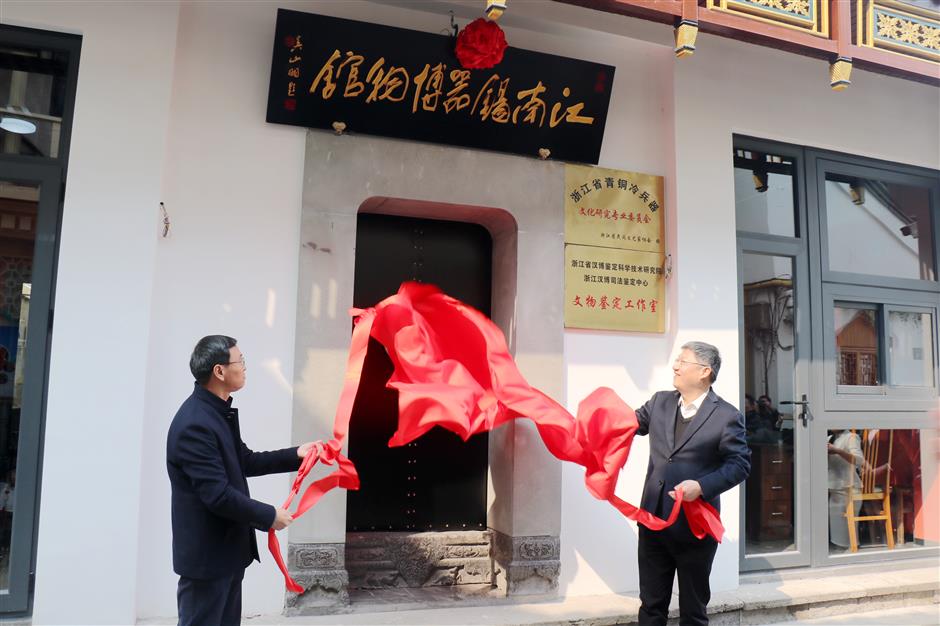Pewter museum houses Song Dynasty artifacts

China's first privately owned pewter museum opened to the public recently. The museum, located in Datong Lane of the Shangcheng District, features a vast collection of Song Dynasty (960-1279) artifacts.
On the first opening day, visitors wandered among the display cases, stopping to discuss the works and checking the year. But the fact that this museum is private, owned by a connoisseur, was what they talked about the most.
Chen Jianming, who owns the museum, is a well-known expert who has spent years collecting and studying antiques. He has donated two Han Dynasty (206 BC-AD 220) ceramics and a Qing Dynasty (1644-1911) wooden couplet to the Zhejiang Museum.
"I was born and grew up in Shangcheng District. All I want to do is make a contribution to my hometown. Since I've collected so many of them, I feel responsible to share them with everybody," Chen said.

The first exhibition at the pewter museum showcases 200 pieces of Song Dynasty military weapons, ritual vessels and stationery.

The first exhibition at the museum showcases 200 pieces of Song Dynasty military weapons, ritual vessels and stationery used by ancient scholars.
The weapons reflect the social turbulence during the transition of the Northern (960-1127) and Southern Song (1127-1279) dynasties. Northern Song Dynasty lost control of northern China to Jurchen, who hailed from Manchuria, during the Jin-Song wars (1125–1234).
The royal court retreated to Hangzhou and established the Southern Song Dynasty. The displayed containers had religious significance and were used as ritual containers during religious events.
The scholars, on the other hand, enjoyed burning incense, drinking tea, arranging flowers and painting. The exhibits are directly related to their lives and provide a complete picture of their spiritual environment.
It is worth noting that the lane where the museum is located was once a hub for pewterware trade. According to historical records, the lane attracted swarms of pewtersmiths.

If you go:
Admission: Free
Address: 23 Datong Lane
打铜巷23号
















